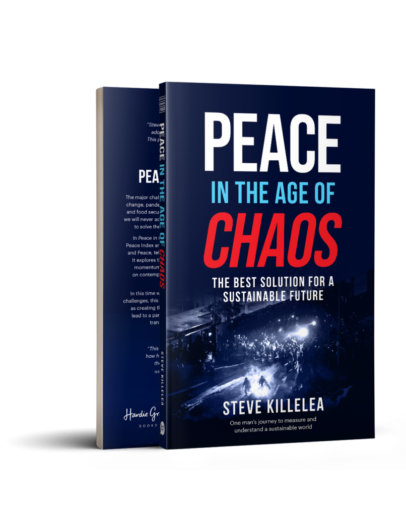Let me begin with a bit of context. During the middle of the COVID-19 pandemic, my husband (also a Rotarian) and I were enjoying cocktails with a couple of other Rotarians a hundred miles away linked by Zoom. We were lamenting how our current clubs were not focused on our passion…peace. After a lengthy conversation, we decided to form our own cause based on-line eClub dedicated to peacebuilding, a concept we had been learning about for a couple of years.
On September 21, 2020 (World Peace Day), we chartered as the Rotary eClub for Global Peacebuilders with members in four states and Africa. Because our new club was to be centered on peacebuilding, a novel and somewhat misunderstood concept to most Rotarians, we decided to charter with twenty-two members so we could make certain we were proficient in our own understanding of peacebuilding and able to communicate the value of peacebuilding as an innovative and exciting alternative way of viewing and acting on peace.
How could we do that? Enter Steve Killelea’s game changing book, Peace in the Age of Chaos, and the Institute for Economics and Peace. In his introduction to the book, Steve writes, “…the elements that create peace can be understood through empirical research.” That statement resonated immediately with club members. Steve’s work was taking peace from a vague and complicated emotional feeling to an understanding of peace as a data-driven pragmatic experiential concept that was achievable, sustainable, and possible.

Soon after our club charter, I found and started reading Peace in the Age of Chaos. My husband started reading my copy. But since he wanted to annotate the insights he was reading; he quickly purchased his own copy. A devoted empiricist from his college days in political science, he realized this book had the power to transform people’s thinking about peace and could be instrumental in a call for action to bring peacebuilding to a larger audience…beginning with our club. He even somewhat jokingly started referring to the book as our club “owner’s manual.”
It was then we decided to form a Peace in the Age of Chaos book club for our members. Since he was the first to finish the book, my husband volunteered to facilitate the book club. We divided the book into four parts discussing three chapters at each monthly meeting beginning on August 31, 2021 and ending with our last regular meeting on December 7, 2021. My husband provided club members with a series of questions and prompts to help them organize their thoughts to prepare for each meeting.
Reading Peace in the Age of Chaos is an excellent introduction to the work of the Institute for Economics and Peace. It was natural for me to join the spring 2021 IEP Ambassador cohort. Since I have become an IEP Ambassador, my husband and two other club members have finished the winter 2021 cohort and have delivered their peace projects. Other members are now interested in joining the next cohort.
Reading and discussing Peace in the Age of Chaos has been an invaluable experience in understanding the underlying philosophy of positive peace for our club members. Using the resources provided by the IEP will help us spread the message that peace is possible.